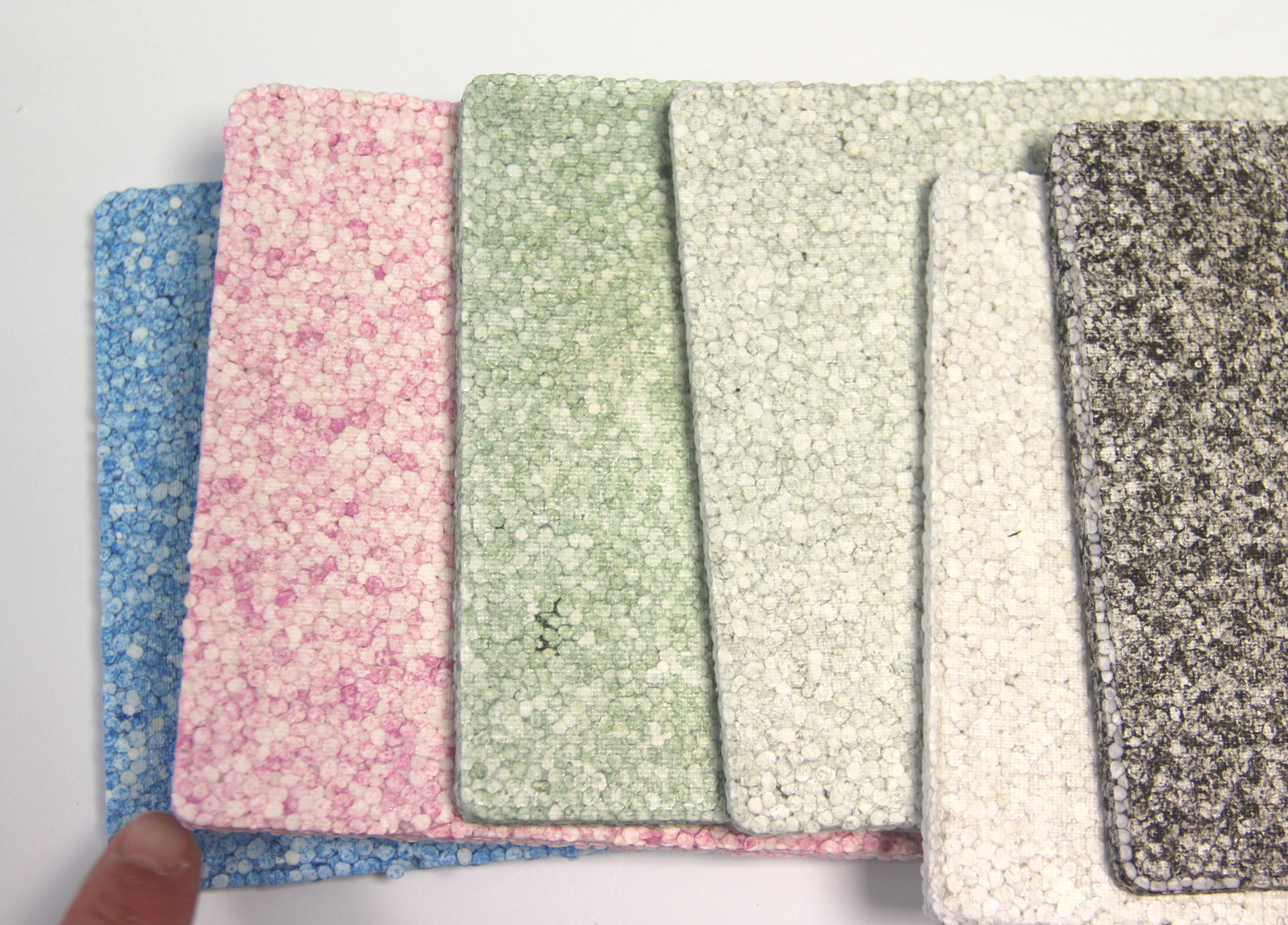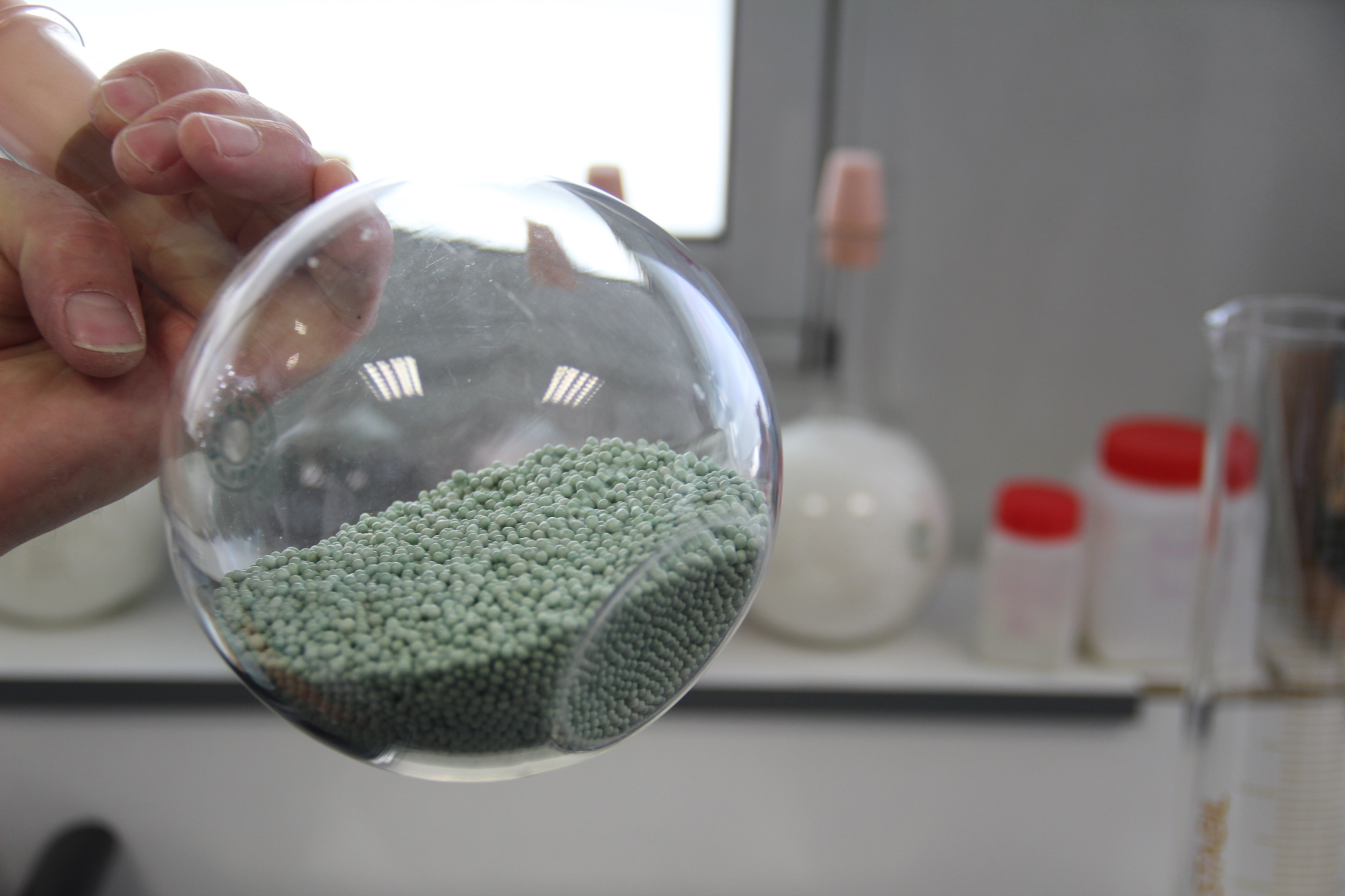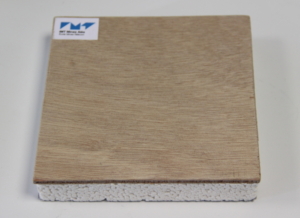Humble beginnings
The project started out very simply. “We did not respond to any call for projects, yet materials development generally requires significant investment,” Éric Guibal says. The production line of the micro-pilot plant was made up salvaged equipment and original concepts using “pieces of existing equipment, sometimes even kitchen appliances, adapted to our purposes,” says Thierry Vincent. The test nevertheless produced convincing results and Benjamin Gallard, also a research engineer at C2MA, joined the pair to handle the task of scaling up the pilot.
The trio then embarked on a search for funding, starting with their own institution and contributions from Gainerie 91, a company in the luxury goods sector. “This kind of project is unusual. In a way we were both too advanced and not enough,” says Eric Guibal. “We already had the support of Institut Mines-Télécom, but we benefited from a trickle-down effect once we convinced IMT Mines Alès.”
They then received funding from the Occitanie region and industrial companies in the area for the scale up to a pilot plant: the project gained momentum and the team signed contracts for developments for the product. In addition to their shared passion for this initiative, the three researchers complement each other in the various aspects of the project, “everyone plays their part by contributing their energy and skills,” Benjamin Gallard explains. “And it must be said, we are very efficient!” he adds with a smile.
Spin-off goals
As their work and perseverance paid off, the project gained speed and the team considered creating a start-up. Arnaud Regazzi, a researcher from Alès, joined the project to provide support in the area of mechanical design and the characterization and modeling of the material’s properties. Éric Guibal and Thierry Vincent then asked Benjamin Gallard to launch and structure the start-up. This was a new challenge for this technical engineer who had to discover the world of entrepreneurship. “The pace of the capacity building is as fast as the project,” Benjamin Gallard jokes.
Once they had registered their AlgiFoam trademark, the team’s tasks changed: “We started to address intellectual property and marketing issues. It came as a change of perspective with regard to our work skills. We learned new things over the course of our discussions, but we also reached out to managerial students for help,” says Benjamin Gallard.
Brown algae, a limited resource
Although the stars seem to be aligning for AlgiFoam, the researchers are not out of the woods yet. “For the time being, we have our foot on both the accelerator and the brakes. We cannot yet commit to volumes for example,” says Eric Guibal.
The brown algae used to produce alginate is a limited resource that is controlled according to reasonable and sustainable standards, “which is a very good thing.” Current production is subject to collection quotas but is mostly absorbed by high value-added applications, for nutrition, cosmetology and pharmacology.
Yet new solutions are emerging, such as algae farms in Norway that have developed techniques for producing brown algae in ponds. The researchers also approached French producers, including Algaia and JRS Rettenmaier, “to pursue local production,” with a common expectation of the production of technical alginates increasing in the next 5 to 10 years, leading to a decrease in the cost of this raw material.
Drying and shaping: the last obstacles
The low-tech, low-energy, solvent-free production chain is still in need of optimization, especially in the drying stage, which was already problematic for ALGIMEL. Although the production of AlgiFoam beads is continuous, the same is not true for the drying process. The team is therefore currently seeking funding to overcome this technological obstacle, which is essential “to achieve fully continuous processes at profitable scales,” says Thierry Vincent.
The shaping step, at the end of the chain, is also problematic at times. AlgiFoam is a water-sensitive biopolymer, which means that conventional techniques cannot be used, since they could alter its properties. Thierry Vincent is therefore pursuing multiple shaping and assembly tests to explore the possible applications of the material. “I initially developed this product to ‘leave’ the lab. My goal is now to ensure that it appeals to as many people as possible,” the project leader explains.









